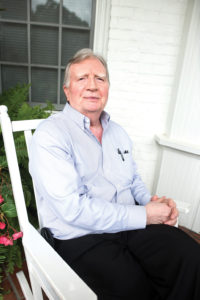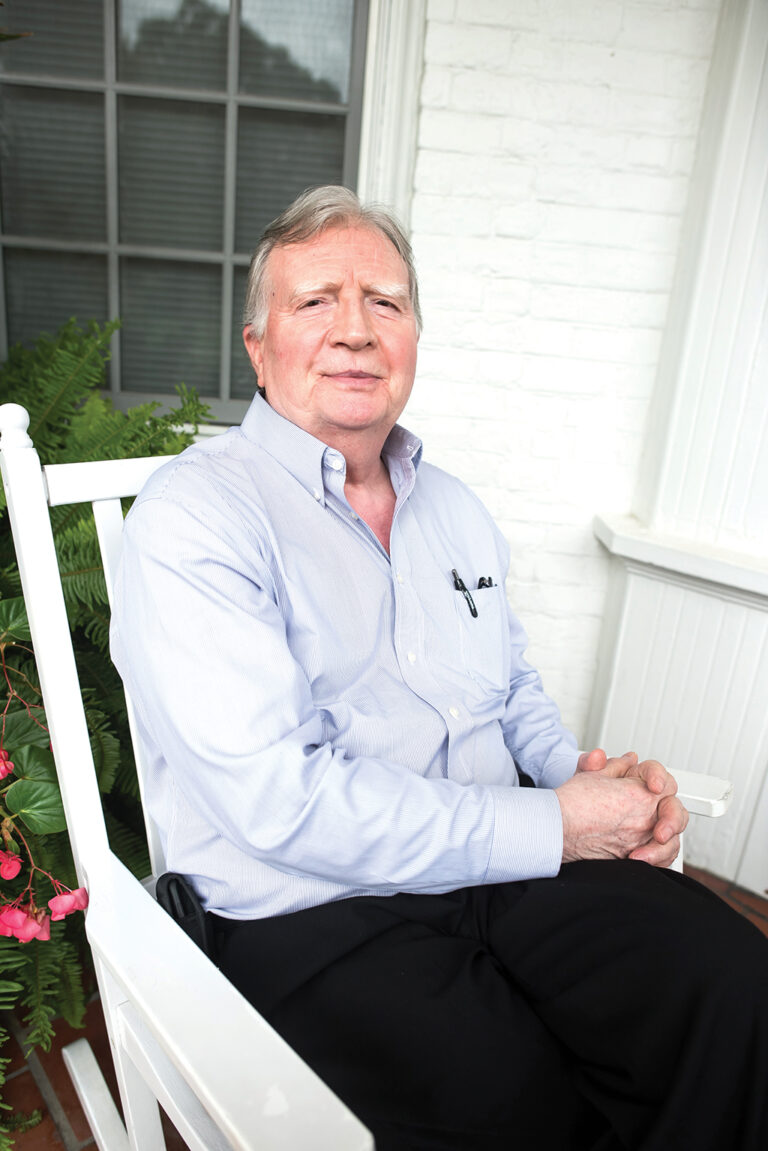Jim Branscome: Fulfilling a Dream

When Jim Branscome left Carroll County, Va., he came to Berea College with $300 in his pocket and a heart full of ambition. Majoring in history and political science, he graduated in 1968 and embarked on a successful 37-year career in journalism and later in finance. He was the first in his family to graduate from high school or college and make a living doing what his grandmother called “indoor work.” His 1971 New York Times magazine cover story on coal strip mining in Appalachia helped lead to federal regulations in 1972. In 1975, Branscome became a correspondent for McGraw-Hill News and the Washington Post, primarily covering Appalachia and earning notoriety as an investigative reporter. After a decade with McGraw Hill News, Branscome joined Standard & Poor’s, where he retired in 2007 as the managing director for investment analysis and as a member of S&P’s executive board. He now resides in Scottsdale, Ariz., with his wife, Sharen.
I started school in a one-room school house. Our 4th grade teacher was a mountain girl herself, and had graduated from Radford Teachers College. She was highly motivated to help us learn to spell and write. If all 16 students spelled all the words correctly in the spelling bee, her husband would bring ice cream the next day. She became our eighth grade teacher and high school guidance counselor. She insisted that all of us go on to college, which far more than half did.
In 1964, Francis Hutchins addressed the entering Berea College freshman class in Phelps Stokes. He said, ‘We can get you as far as Harvard can get you.’ Nobody said, ‘Hillbillies can’t do that.’ Everyone believed him, and I think he believed it.
(BC President) Lyle (Roelofs) asked me once to help him understand why there was extraordinary leadership from classes in the 1960s. I think the answer is we were the first generation after World War II; America was dominant around the world; we elected a president talking about Peace Corps and he was young, vigorous and inspiring; and Harry Caudill had just written the book, Night Comes to the Cumberlands, which got Appalachia on the map.
Two things are remarkable about this: one, Berea students suddenly realized they were more special than they thought because Appalachia was getting a lot of attention. Two, our generation had a high level of confidence that they could do things that mattered and would change things.
I was a student teacher for Dr. James Holloway in the Philosophy and Religion Department. He also was editor and publisher for a magazine for the Committee of Southern Churchman called Katallage, which is the Greek word for reconciliation. The leader of the committee was a Nashville-based, Yale-educated, Southern Mississippi Baptist named Will Campbell.
He and Holloway had an interesting way of attracting important writers to the magazine, such as Father Thomas Merton from Gethsemane who wrote Seven Storey Mountain. He was among dozens of famous people who wrote for the magazine. I was the copy editor for a lot of those people when I worked for Dr. Holloway.
I was 35 years old before I had what some would consider a real job. I lobbied in the Kentucky legislature one year about coal strip mining. Mike Clark ’67 and I founded the Southern Appalachia Leadership Training project that ran for 25 years, but at age 35, I was about as poor as when I started at Berea.
In 1971, I had gotten a taste of what it would be like to write for the New York Times. I was very lucky and had a lot of people contact me to write about the mountains—from Crawdaddy magazine, which was a rock-and-roll publication, to the Washington Post.
I met my wife, Sharen, while we were working for the Appalachian Regional Commission in Washington, D.C. She had just come back from being a Vista volunteer in Guam and was recruiting nurses in Appalachia. I was in a meeting giving all my grand strategies about reforming healthcare in the region. Someone spoke up and asked, ‘Why would you do it that way?’ so I married her. That was almost 48 wonderful years ago. We both are tremendously respectful of what education can do to change people and society.
One thing dear to our hearts is helping people in a similar situation to ourselves have a dream about a better life. There is a bigger mission in life than becoming an astute consumer. I insist all the money we donate to Berea goes to students from designated distressed counties of Appalachia through the Berea Fund Scholarship.


